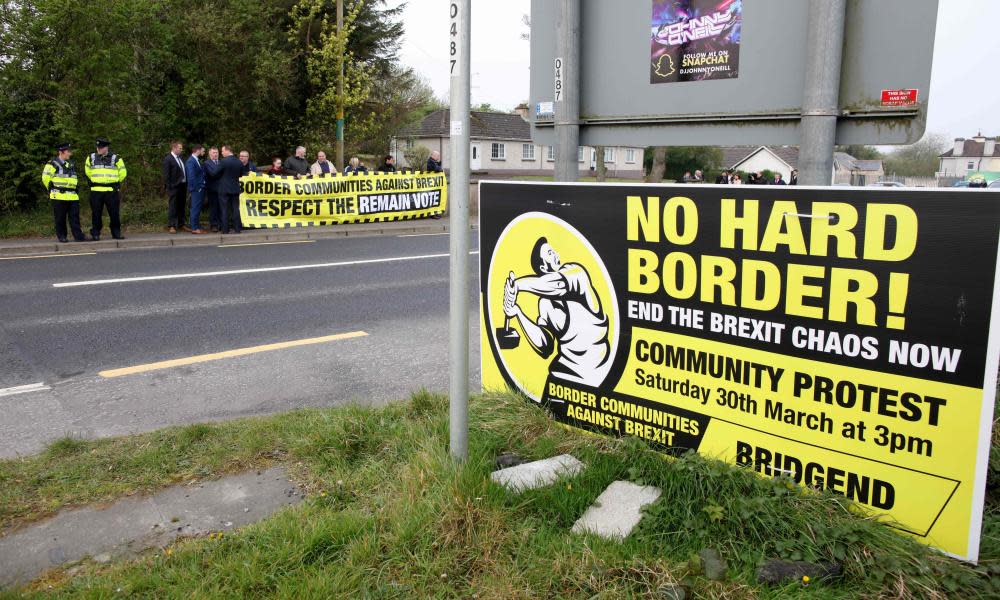What's new in Johnson's attempt to remove Brexit backstop?

Is there anything new in Johnson’s letter to Tusk?
Johnson is repeating his familiar demand for the EU to scrap the backstop – the mechanism to stop a hard border on the island of Ireland by potentially keeping the UK in a customs union.
But he lays out three specific reasons why the UK believes the backstop is bad. First, that it is antidemocratic because the UK may not be able to exit a customs union and Northern Ireland could be kept in some areas of regulatory alignment without a say over them. Second, a new argument that it defeats a key aim of the leave campaign – regulatory divergence from the EU – which departs from Theresa May’s position. And third, another new argument that the backstop actually undermines the Belfast (Good Friday) agreement, rather than protecting the peace settlement as the EU claims.
(September 3, 2019)
The date on which the Commons is likely to return from summer recess. It is the first date that MPs could hold a vote of no confidence in the new prime minister. However, rebel MPs would need to be confident they could form an alternative government, as many wish to avoid triggering an election.
(September 12, 2019)
Mps would be due to go on conference recess - but could continue to sit if a no-confidence vote had been lost.
(September 17, 2019)
Assuming the government has lost a confidence vote, this would be the deadline for Labour or any unity government to win a confidence vote. If not achieved, Boris Johnson would call an election. Parliament could then be prorogued.
(September 22, 2019)
The Labour and Conservative party conferences are due to be held on consecutive weeks.
(September 27, 2019)
Parliament would be dissolved if an election were to be held on 1 November.
(October 17, 2019)
EU leaders meet for the final European council summit before the UK's extension is due to expire. Rebel Tories and remainers may choose to call a no-confidence vote if an extension is not offered as a way of preventing no deal.
(October 31, 2019)
The six-month article 50 extension will expire.
(November 1, 2019)
The UK could hold a general election.
Another new aspect of the letter is that Johnson proposes some vague steps for a way forward. He demands new alternative customs arrangements to be put in place in the two years of transition, then offers the possibility of “commitments” to prevent a hard border instead of the backstop.
How will the EU react?
At first, there were negative noises from EU sources saying Johnson was trying to move the goalposts. The Irish taoiseach, Leo Varadkar, has said changing the backstop by reopening the withdrawal agreement will not be possible. And then the verdict came in from Donald Tusk, the outgoing European council president, who poured cold water on the idea that Johnson’s letter could lead to the backstop being revisited.
“The backstop is an insurance to avoid a hard border on the island of Ireland unless and until an alternative is found. Those against the backstop and not proposing realistic alternatives in fact support reestablishing a border. Even if they do not admit it,” Tusk tweeted.
Johnson is due to meet the German chancellor, Angela Merkel, on Wednesday and the French president, Emmanuel Macron, on Thursday, so there will be more of an idea how his ideas have gone down with major EU leaders then. Most probable, they will criticise the ideas for being so vague as to be meaningless and demand a more specific plan.
Is Johnson really serious about a renegotiation?
There are some hints in the letter that Johnson may still be open to compromise. By setting his demands so high – total abolition of the backstop – there could possibly be a remote chance there will be a landing zone where both sides give a little and agree to rebadge the backstop with another name and a time limit, allowing each to declare victory and no deal averted. His inclusion of inverted commas round the “backstop” and offer of alternative “commitments” may give hope to some anti-no-deal but pro-Brexit MPs that a compromise can be found. That was the view of Alberto Costa, a Tory MP campaigning for EU citizens’ rights, who told the BBC’s Newsnight programme that he thought the letter was paving the way for Johnson to ultimately bring back a “rehashed version of Theresa May’s deal” that Johnson could be able to get through the Commons with the help of some Labour votes.
Could it be yet another bluff?
Another strong theory is that Johnson does not really believe the EU will back down because his demands are too excessive and has no intention of compromising himself. This is the charge levelled at him by the former chancellor Philip Hammond and 19 Tory colleagues. If this is the case, the purpose of the letter appears designed to persuade the public that he is at least trying to get a deal. He would go on to paint the EU as intransigent in an election campaign and try to blame the bloc for forcing the UK into a no-deal Brexit.

 Yahoo News
Yahoo News 
